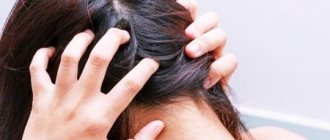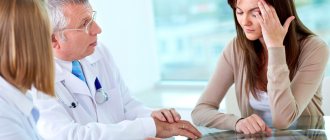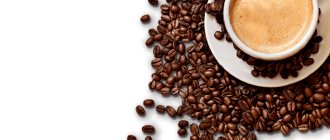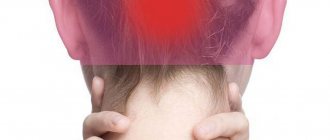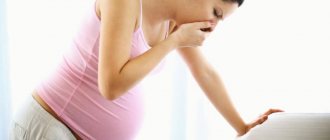Such a pain?
Unfortunately, most patients consult a doctor only if the headache occurs frequently or is constant and/or intense. The vast majority of patients do not realize that headaches can be caused by a huge number of factors. Tension headache; post-traumatic headache; headache caused by increased or decreased intracranial pressure; headache with long-term use of medications; headache caused by infections, etc.
First, let's define the very concept of “headache”. Doctors consider this to be any unpleasant sensation in the area upward from the eyebrows to the back of the head, since pain in the face area is classified as a separate group of facial pain. In a broader sense, a headache is any feeling of discomfort localized in the head area.
Treatment tactics
After determining the cause of headache and nausea, a treatment regimen is selected. It may include several stages aimed at eliminating the underlying cause and alleviating the patient's condition. Doctors at the Clinical Brain Institute monitor the effectiveness of treatment at every stage and supervise the process until complete recovery.
- Drug treatment is the main stage. Painkillers and antispasmodics may be prescribed, as well as drugs to regulate blood pressure. If a bacterial infection is determined, a course of antibiotics is indicated.
- Physiotherapy is a set of techniques aimed at improving blood circulation and nutrition of the brain. They are based on the irritating effect of using electric current, magnetic and laser radiation. The procedures are carried out in a course and are indicated only during the period of chronic disease.
- Surgical treatment is necessary to remove tumors, aneurysms and other growths that put pressure on nerve tissue and cause headaches. The effectiveness of the operation is determined by the timeliness of its implementation, as well as treatment during the recovery period.
The Clinical Brain Institute diagnoses and treats diseases that are accompanied by headaches and nausea. Doctors recommend not to self-medicate and contact immediately if you feel worse. These signs may not pose a threat to life and health, but in some cases they indicate serious pathologies that require timely medical attention.
Clinical Brain Institute Rating: 4/5 — 25 votes
Share article on social networks
Non-pathological causes of daily headaches
Brain activity is disrupted due to minor disturbances in blood supply, metabolism, and innervation. Night headaches occur for the following reasons:
- lack of oxygen;
- high temperature in the bedroom;
- drinking alcohol in the evening;
- overwork.
Healthy sleep depends on bedding and posture. On a high pillow, the cervical spine bends strongly. Even in the absence of discomfort during sleep, muscle tension occurs and cerebral blood flow is disrupted. Sleeping without a pillow can also cause pain in the head and neck. Low-quality fabric dyes and softeners used to wash bed linen often contain harmful ingredients that cause breathing problems and headaches in the morning.
Experiences and intense mental activity in the evening lead to brain overstrain. At night he cannot switch off. The patient cannot sleep and often wakes up. After waking up, you feel discomfort, pain in the head, and fatigue. He gets morning headaches.
Why pain occurs after eating: what is the essence of treatment
Pain after eating, originating in one area, is projected onto another; this type of pain is called radiating. Why does this problem occur?
What causes an exacerbation
Dairy products, sugar, spicy or fatty foods can trigger inflammation and worsen back pain symptoms. During a gallbladder attack, a feeling of nausea appears and pain appears, radiating in the dorsal area. It can “squeeze” a person with a hoop, be aching, move under the shoulder blade, into the lower back. Digestive disorders - nausea, constipation, belching, etc. - are associated with the organs involved in this process.
With osteochondrosis, when swallowing food passing through the digestive canal, pain is felt in the spine, because internal organs are attached to it. It intensifies with movement and muscle weakness occurs.
back pain may indicate a heart attack. In case of myocardial infarction, it is difficult to establish an accurate diagnosis without laboratory tests.
Atypical signs are more often detected in women:
- pressure is felt in the upper dorsal region;
- dizziness;
- I have a stomachache;
- breathing is lost.
After eating, many people experience gastrointestinal upset. Back pain after eating is a consequence of heartburn. Kidney infection is another cause of discomfort in the spine. If you suspect such a condition and to avoid complications, seek help from specialists.
Slouching while eating and poor posture provokes fatigue. For problems with the spine
You can't close your eyes.
How to get rid of unpleasant feelings
To avoid pain after eating, you need to determine the cause of pain and change your diet. Alcohol causes heartburn and ulcers. Triggering products are:
- bread and chocolate products;
- coffee;
- over-salted, spicy and over-sugared foods;
- tomatoes;
- binge eating.
For pyelitis (inflamed kidneys), avoid spices and alcoholic drinks. Avoidance of fried and smoked foods is encouraged. For preventive purposes, three times a year they drink an infusion of brewed lingonberry leaves, horsetail and bearberry. Once a day, be sure to drink water with two tablespoons of apple cider vinegar.
In a special diary, the patient writes down which ingredients cause pain. You should consult a nutritionist to choose the right diet.
If a kidney infection is detected or the stomach is infected, the doctor prescribes antibiotics. For mild pain discomfort, painkillers are prescribed to control pancreatitis and gallbladder enlargement.
Yoga and Pilates will be beneficial for body correction. Physiotherapeutic procedures in the form of warm-up and exercises will strengthen the back muscles and support the spine. If a physician finds it difficult to determine pain after eating, then for relief:
- will need to rest;
- apply a cold compress for 20 minutes. Ice from the freezer wrapped in a cloth will do. If the pain signal does not go away after two days, then they change tactics - apply heat. The hot bandage will increase blood flow in the lower back. A heating pad can ease nervous urges. A warm bath will relieve muscle spasms and relieve pain. A bag of heated salt will “transfer” heat to the internal tissues;
- take painkillers.
Regular physical exercise will make your muscles strong and eliminate bad posture.
When medical intervention is required
After eating, the pain does not go away, it becomes more acute, then medical help is needed. If other symptoms occur - black stools, heavy urination, heaviness in the sternum, profuse sweating - call emergency medical care.
If the pain syndrome is very severe, then the person is left lying on a hard surface. Before the ambulance doctors arrive, the patient is placed in the fetal position, i.e., to relieve suffering. to the one that causes the least inconvenience. They are not allowed to eat or drink so as not to complicate the diagnosis of the disease. The doctor will give an anesthetic injection and recommend what is the best thing to do: call a therapist at home or go to the hospital. Don't self-medicate!
When liver tingling occurs, the patient feels pain on the right under the ribs. It also occurs with neurological disorders. The functioning of the pancreas has failed - this is immediately felt after eating by painful discomfort in the back. It is encircling in nature and can be localized under the shoulder blades or on the right side of the spine.
To establish an accurate diagnosis, the patient donates blood and urine. An ultrasound scan of the abdominal cavity is performed. Takes a chest x-ray and undergoes an electrocardiogram to rule out disorders in the cardiovascular system. An MRI will determine changes in the spine.
Traditional recipes: positive effects of use
After consulting a doctor, you can resort to alternative medicine. Infusions and decoctions based on medicinal plants will help get rid of painful sensations:
- chamomile;
- marigolds with bright yellow flowers;
- aerial parts of centaury;
- bog grass (swamp);
- raspberry and currant leaves.
It is useful to drink flaxseed, steamed in a glass of boiling water and infused for 12 hours. You can’t do without honey, propolis, sea buckthorn and potato juice. If, in addition to unpleasant symptoms, there is constipation, then you need to eat boiled beets, steamed dried fruits, and plums. In case of the opposite effect - diarrhea: bananas, apples, beans will strengthen the stomach.
Along with non-drug therapy, bed rest is prescribed for several days.
Wearing an orthopedic corset is prescribed to protect the lower back, and electrophoresis with an anesthetic saline solution. Author: K.M.N., Academician of the Russian Academy of Medical Sciences M.A. Bobyr
Diagnosis of headache
Neurologists at the Yusupov Hospital determine the cause and type of persistent headache based on data from a clinical examination of the patient, instrumental and laboratory research methods. Doctors at the Neurology Clinic prescribe the following diagnostic procedures:
- Doppler ultrasound of head and neck vessels;
- electromyography;
- electrocardiography;
- diagnostic spinal puncture (if a neuroinfection is suspected).
Computed tomography and magnetic resonance imaging are performed if a brain mass is suspected. To determine the condition of the cerebral vessels, contrast angiography or multislice tomography is performed.
The result of self-medication
There are a huge number of causes of headaches. However, cases are becoming more and more common when the cause of chronic pain is self-medication. Headache can be caused by vasodilators (nitrates, chimes, calcium antagonists), non-steroidal anti-inflammatory drugs (nurofen, diclofenac) and antihistamines (tavegil, suprastin, etc.). For example, abuse of analgesics can lead to the development of drug-related, so-called chronic abuse headaches. The habit of taking analgesics several times a day may indicate a negative result from taking painkillers.
Overuse headache, caused by the reverse effect of analgesics, is a disease of modern society, where there are a huge number of over-the-counter drugs widely advertised in the media. The availability of self-medication with overdose has led to drug-induced pain becoming an international problem. According to researchers in the USA, Italy, Germany, and Switzerland, its frequency is 20% among other types of headaches.
